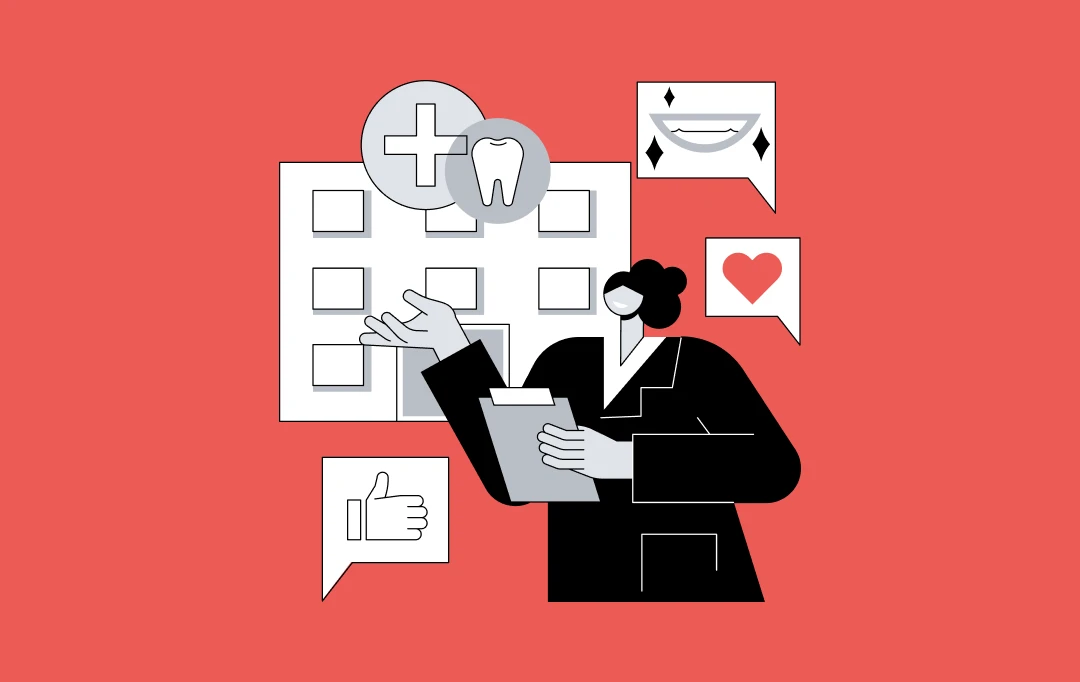- The Shift in Radiology With Mobile Apps - Its Role, Working, and Use Cases
- Working of Mobile Apps in Radiology
- 9 Best Mobile Apps in Radiology to Get Inspired From
- 1. Mobile MIM
- 2. MobileRad
- 3. SnapView
- 4. Ambra Health Ap
- 5. ASTRA Mobile
- 6. Vue Motion
- 7. Radiology 2.0: One Night in ED
- 8. iClarity Lite
- 9. Monster Anatomy Lite-Knee
- Technologies Contributing in Digitising Radiology
- 1. Big Data
- 2. Artificial Intelligence
- 3. Internet of Things (IoT)
- Wrapping Up
In the past few years, the world of Radiology has undergone a 180-degree transformation. The field has evolved beyond traditional boundaries with the advent of new technologies, techniques, and tools – with mobile apps listed on the top.
The mobile healthcare applications have brought new opportunities in the healthcare arena in terms of electronic transmission and sharing patient health data. They have proven to be indispensable power behind the evolution of Healthcare from 1.0 to 3.0 by facilitating real-time communication facilities, safer payment methods, effective patient consultations, and image viewing – the element we will be discussing in this article.
The Shift in Radiology With Mobile Apps – Its Role, Working, and Use Cases
Just like other fields, mobile applications have transformed the image viewing aspect of the Healthcare industry. These applications, designed while focusing on every element of Healthcare app development guides, have helped the radiologists with easing the process of gathering, editing, analyzing, and sharing digital images anywhere and anytime. These applications have added security, convenience, and efficiency into the process.
Wondering how? Let’s look into the working of mobile applications in Radiology to understand the concept in a better manner.
Working of Mobile Apps in Radiology
When considering how a mobile application in Radiology field acts, the process begins with setting up a common database for both DICOM and non-DICOM images(mostly on Cloud). This database is further taken into consideration for delivering scalable and functional services.
When a radiologist or any medical doctor login the application and request for a medical image (or more), the centralized server requests for a copy of the data from database. This copy is then sent to the device user is using, such that it is erased out after 48 hours of download. Implying, users are provided the convenience to get access to their medical data instantly as well as the necessity to protect PHI (private health information) is not overlooked.
Now, when we have covered what is the role of mobile apps in Radiology and how they work, it is likely that you would be excited to hire a healthcare application development company and discuss your app needs.
But, wait!
Before you take a jump into mobile industry, it is profitable to turn towards various existing mobile applications to get an idea of what features and facilities can make your application a success.
So, taking the same thought forward, the next section of this article will be around mobile applications that have showcased how swiftly mobile technology is helping radiologists and other practitioners with the use and share of healthcare images.
Also Read: How Much Does It Cost to Build a DICOM Medical Imaging Software?
9 Best Mobile Apps in Radiology to Get Inspired From
1. Mobile MIM
Mobile MIM is the very first FDA-approved diagnostic radiology app that has been disrupting the world of image viewing. The application offers multiple features and functionalities to the radiologists, healthcare administrators, and patients, such as real-time viewing, fusion, registration, and/or exhibit of digital medical images from various modalities, such as PET, CT, X-Ray, SPECT, MRI, and Ultrasound. These facilities further help with creating effective medical plans and providing seamless healthcare services to the audience.
2. MobileRad
Designed by Utah-based healthcare technology agency Novarad, MobileRad is a HIPAA- approved application integrated with NovaPACS® system to display data on third-party devices. The application, available on the App Store, provides radiologists and patients with a myriad of options such as viewing, analyzing, editing, distributing, and archiving digital medical images.
With these options, the application makes it easier to access accurate diagnosis in real-time and thus, take the right decision.
3. SnapView
SnapView is another healthcare iOS application that avails the facility to capture non-DICOM images in departments, such as ED, Wound care, Dermatology, and Ophthalmology. And then share these images directly to Ncompass Universal Archive™, with no PHI (Patient Health Information) left behind on the device.
4. Ambra Health Ap
Ambra Health App is yet another mobile application making a difference in the Radiology field. The application offers medical and healthcare providers with an opportunity to access current and prior digital images instantly on their devices – be it a MR, PET, CT, or MG. Also, it facilitates them with an option to collaborate and communicate with other physicians and patients in a seamless and effective manner.
5. ASTRA Mobile
Introduced by Candelis, ASTRA mobile is another finest medical image and report accessing applications. It enables users to receive, view, download, print, and share their medical reports and encrypted DICOM images with anyone across the globe.
6. Vue Motion
Carestream’s Vue Motion is also one of the most popular applications in Radiology field. This application empowers users to access images across multiple platforms, such as PC, MAC, mobile phones, etc., and thus, enhance the process of image viewing and deciding the right medical process.
7. Radiology 2.0: One Night in ED
This mHealth solution acts as an instructional tool that introduces a series of cases commonly found in an ED setting such as abdominal and pelvic pathologies, and empower users to simulate reading CT scans on their own PACS workstation. Besides, it showcases pathologies and suitable findings to ensure a significant experience.
8. iClarity Lite
iClarity Lite is also emerging out as the finest medical image viewing app in radiology field. The app is helping users to receive and view images stored on clarity PACS with distinct iClarity Server module installed. Also, it is providing them with options like search and sorting, scrolling images in multislice series, ‘shake the device’ for image reset, and more.
9. Monster Anatomy Lite-Knee
Monster Anatomy Lite-Knee is also one of the best mobile applications in the world of Radiology. The app acts as an interactive lower limb radiology atlas that provides healthcare professionals and medical students with an interactive and detailed information about knee via images.
While these mobile applications would have helped you to clear cloud of doubts and learn what features and facilities to offer in your image viewing application, it is also imperative to pay attention to the cutting-edge technologies that are making a difference in the industry.
So, let’s uncover what and how technologies are reshaping the world of Radiology.
Technologies Contributing in Digitising Radiology
1. Big Data
Big Data plays a pivotal role in the planning and implementation of radiological processes. The technology helps with gathering a heap of data and convert them into useful datasets using different algorithmic tools for gaining better knowledge and insights. Also, it helps in performing different actions on data, such as scheduling of scans, writing patient-focused personalized scanning protocols, emergency reporting, radiologist decision support, etc. – which eventually result in delivering better services to radiologists and patients.
2. Artificial Intelligence
Artificial Intelligence is also proving to holding a promising future in the world of Radiology. The technology is transforming healthcare by automating repetitive tasks, such as monitoring measurements in Cancer treatments.
It is also helping radiologists and other healthcare service providers with making customized and intelligent routes, taking better decisions, improving workflow efficiencies, and hence, delivering informative diagnostic content. This, as a whole is helping to meet the gap between the number of scans – that are rising by 12% every year – and the number of radiologists available, which is increasing by 3% annually.
One of the finest examples of the role of Artificial Intelligence in the field of Radiology is HeadXNet.
3. Internet of Things (IoT)
Another technology that is disrupting the world of image viewing is IoT. It is providing pathologists, radiologists, and other healthcare practitioners with assistance in mitigating the challenge of lightning while reading digital images in different planes and modalities.
Besides, it is integrating with Machine learning and Cloud technology to optimize workflow, predict possible failures, collecting data on standalone X-ray, Ultrasound and CT, and enabling a 360-degree view of their current status.
This, as a whole, is aiding radiologists and healthcare practitioners with a fuller picture of the current state of devices and tools, and encouraging them to make the right move towards success by investing in IoT-based healthcare app development.
Wrapping Up
Mobile applications are making a significant impact on the Image viewing and other segments of radiology. These apps, by getting into alliance with advanced technologies, are offering ample of opportunities to simplify and optimize processes of Radiology, and deliver exceptional experience to the patients – giving a boost to the idea of introducing a mobile app for your Radiology organization.
But, even after reading this article, if you feel that some of your doubts are not cleared, feel free to consult with our mHealth experts.



How Much Does it Cost to Build a Custom Dental Practice Management Software?
In recent years, dental practices have shifted away from manual, paper-based systems and embraced advanced software solutions. This change boosts efficiency, enhances patient experiences, and improves data management. While dealing with patient data, dentistry has ditched old-school methods like physical charts, appointment books, and manual billing. They’ve leveled up with a high-tech data handling &…

EMR Integration in Healthcare Systems - Benefits, Features, Process, Costs
EMR integration, having proved its worth in the healthcare space with improved workflows, better patient engagements, and lowered operational costs has built itself a projected market share of USD 20.7 billion. Eventhough a range of hospitals swear upon the benefits EMR system integration has garnered them, the adoption level digital healthcare industry anticipated has still…









